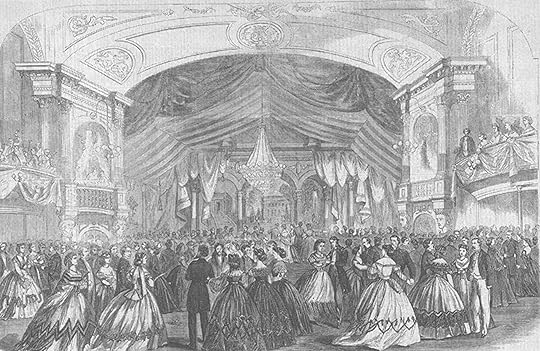Jeanne Gehret's Blog: http://SusanBAnthonyFamily.com/, page 10
June 2, 2017
“Hidden Figures” women built on Susan B. Anthony’s work
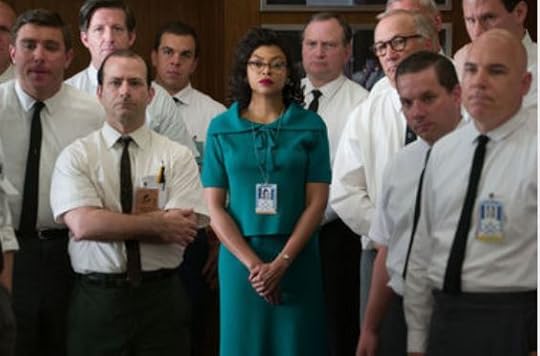 This movie showed how real twentieth-century heroines made strides for women’s rights. Susan B. Anthony
This movie showed how real twentieth-century heroines made strides for women’s rights. Susan B. Anthony
would have been proud to see how these women built on her firm foundation.
The three NASA women depicted in “Hidden Figures” had two strikes against them. First, they were women in “male” fields (mathematics and science). Second, they were black in a field dominated by whites.
How NASA discriminated against women and blacks:
Katherine Johnson of NASA had to run a half-mile in high heels just to relieve herself! I can empathize because when I matriculated as one of the first women in a certain Catholic seminary, I had difficulty finding any ladies’ room.
When Dorothy Vaughan’s supervisor quit, she assumed that person’s responsibilities. Despite this, she fought an uphill battle to get a promotion that acknowledged the work she was already doing. Reminds me of a story from Susan B. Anthony’s childhood when her father would not promote women to supervisory positions in his mill (even though the women knew more about the work than the men).
Mary Jackson had to file a legal request to attend engineering courses because she was black. This harks back to how how the University of Rochester– in Susan’s own hometown–refused to admit women without a large financial contribution.
Early in life Susan lamented that she received only ¼ of a man’s salary for doing the very same job. In the movie we see Katherine Johnson struggling for acceptance among male co-workers who did not have as much mathematical ability as she did. Women’s rights activists still have a long way to go on this item.
Susan would have frowned to see how long it took for American society to address some of those issues. But she would have rejoiced to see these women entering STEM fields formerly reserved for men.
The post “Hidden Figures” women built on Susan B. Anthony’s work appeared first on Susan B. Anthony Family.
May 30, 2017
What would Susan B. say about “Hidden Figures?”
 What a great movie about civil rights! I love movies that challenge and uplift,
What a great movie about civil rights! I love movies that challenge and uplift,
but I have little time for those that focus on futility. It was also a movie about one of the most degraded group in American history-black women.
The three women depicted in this movie had two strikes against them in their work on the space program for NASA—not only were they women in a field of male mathematicians and scientists, but they were black in a field dominated by whites. Here are a few things I noticed:
Imagine Katherine Johnson of NASA, who had to run a half-mile IN HIGH HEELS every time she wanted to relieve herself! I can empathize because when I was admitted as one of the first women in a certain Catholic seminary, I had difficulty finding any ladies’ room and felt cut off when all my classmates retired to their dormitory rooms after lunch.
Mathematician Dorothy Vaughan fought an uphill battle among NASA women to get a much-deserved promotion for assuming the work of her supervisor who quit. Reminds me of a story from Susan’s childhood when her father would not promote women to supervisory positions in his mill even though the women knew more than the men.
Mary Jackson had to petition the court for permission to attend engineering courses because she was black—reminiscent of how the University of Rochester, in Susan’s hometown, would not admit women without a large financial contribution.
Early in life Susan was angered by the fact that she received only ¼ of a man’s salary for doing the very same job. In the movie we see Katherine Johnson struggling for acceptance among male colleagues who did not have as much mathematical acumen as she did.
Born into an era when women had access to only a few jobs (mostly to do with the upkeep of clothing and children), Susan would have rejoiced to see these women entering fields hitherto reserved only for men. As a staunch abolitionist who helped present 400,000 petitions to Congress asking for the end of slavery, the idea of African-Americans in prominent positions would have filled her with satisfaction.
The post What would Susan B. say about “Hidden Figures?” appeared first on Susan B. Anthony Family.
May 26, 2017
The Anthonys’ Quaker Roots
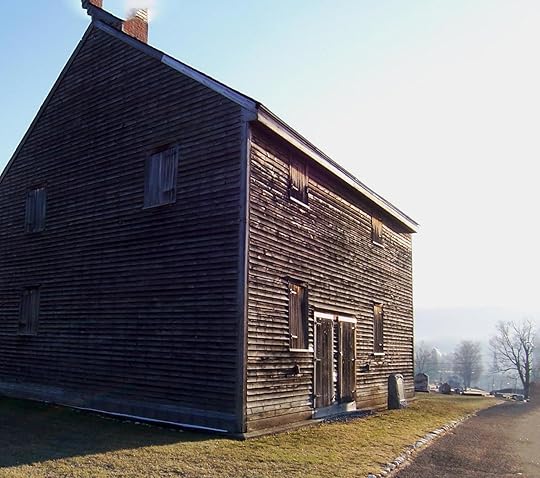
Quaker Meeting House, Adams. Photo by Jeanne Gehret
A couple weeks ago I had the pleasure of presenting “All for Suffrage: Susan B. Anthony’s Kin” at Susan’s birthplace museum in Adams, MA, near the border of New York State.
After my presentation, my friend and I received a private tour by Adams Historical Society president Eugene Michalenko of the East Hoosuk Quaker Meetinghouse not far from Susan’s home. That is where Susan’s Aunt Hannah Hoxie (her father’s sister) sat on the “high seat” sharing spiritual insights during meetings. Hannah was regarded by the congregation as a gifted speaker in an era when women outside of Q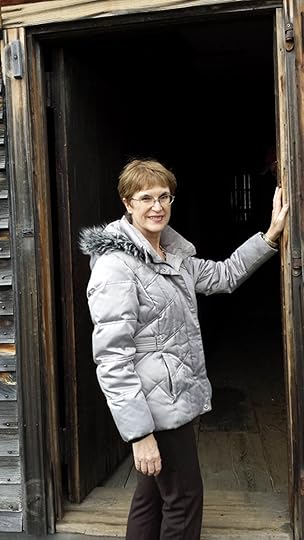 uakerism rarely spoke in public.
uakerism rarely spoke in public.
The high seat turned out to be on the top row of pews facing the congregation, nearest the center. Hannah’s central position connotes some importance. Measuring about 45×45 feet, the building features separate doors for men and women, who held their own meetings and kept separate records.
Once inside, a movable partial wall divides the two sides, with women and children sitting on the side with a huge open fireplace. (How kind those Quaker gentlemen were!) The dividing wall was removed during worship; thus, Hannah could be seen (and heard) by both men and women.
The Meetinghouse website includes more photos and describes many tenets of Quaker beliefs, including their opposition to war. Annually Daniel Anthony, Susan’s father, greeted the taxman by telling him that he refused to support a government that wages war and if he must extract the tax, he should riffle through Anthony’s wallet and take it himself.
Later, Susan’s brother D.R. Anthony ran afoul of Quaker pacificism when he killed a rival publisher in a streetfight in Leavenworth. By that time, the Anthonys belonged to the Rochester, NY Meeting, and a delegation wrote to D.R. questioning his adherence to the beliefs of his ancestors. Read more about that conflict in my book The Truth About Daniel, published in January.
The post The Anthonys’ Quaker Roots appeared first on Susan B. Anthony Family.
May 22, 2017
Why did Susan B. frequent Lily Dale?
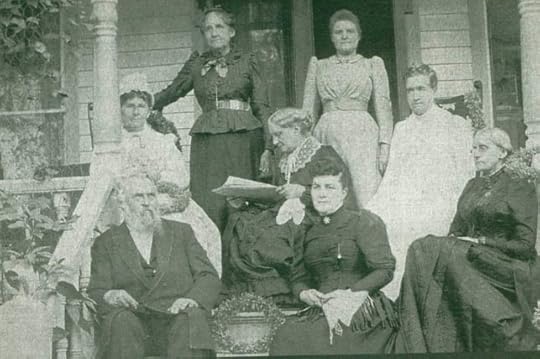 Besides its Spiritualist activities and many entertainments such as billiards, swimming, ferris wheels, and boating, Lily Dale was known for its support of women’s rights. Marian H. Skidmore, a leader of the Spiritualist community, was a great proponent of woman suffrage. At her invitation Susan B. Anthony frequently spoke about women’s rights at Lily Dale and participated in the town’s activities.
Besides its Spiritualist activities and many entertainments such as billiards, swimming, ferris wheels, and boating, Lily Dale was known for its support of women’s rights. Marian H. Skidmore, a leader of the Spiritualist community, was a great proponent of woman suffrage. At her invitation Susan B. Anthony frequently spoke about women’s rights at Lily Dale and participated in the town’s activities.
Perhaps it was the availability of an audience and beautiful relaxing woodlands that drew Miss Anthony more than answers about life after death. From Anthony’s authorized biography by Harper (p. 710) comes Susan’s account of her speech at Lily Dale in 1890:
People came from near and far. Fully three thousand were assembled in that beautiful amphitheater with the yellow [suffrage color] and the red, white and blue….Every cottage in the camp was festooned with yellow, and when at night the Chinese lanterns were lighted on the plazas, it was gorgeous as any fourth of July celebration, and all in honor of Woman’s Day and her coming freedom….Mr. and Mrs. Thomas Skidmore are the center of things at Lily Dale, and right royal are they in their hospitality as well as their love of liberty for all.
When Mrs. Skidmore died, Susan wrote this memorial:
“Editor Cassadagan:
It seems impossible that dear Mrs. Skidmore has gone from our mortal sight forever. I loved her….And on Woman Suffrage days—can it be possible that that noble, motherly woman will be no more there to preside over it? And yet, when I think of the belief, or knowledge, as she would say, of so many of her dear friends that she is not gone, but with them in a fuller sense than ever, I am led to exclaim, “Verily Spiritualists eat of bread the world knows not of.” Yours sincerely, Susan B. Anthony
Whatever her reasons for visiting the Spiritualist resort, Susan seems to have relaxed and enjoyed herself fully there, even going so far as to lead the line of ladies in gowns and gentlemen in tuxedos at the Saturday night grand balls. Quite a departure from her girlhood upbringing as a strict Quaker in the Berkshire Mountains.
(photo by Hilda Wilkinson in Lily Dale, by Christine Wicker, HarperSanfrancisco, 2002. Susan is on the extreme right.)
May 18, 2017
Did Susan B. Anthony commune with the dead?
 It is difficult to know Miss Anthony’s personal thoughts on this topic. Given her anguish over loss of family members and her speculations about life after death, it is plausible that she would have tried to commune with loved ones lost. One of six children, she outlived all but one of her siblings and commemorated their birthdays long after their demise. Upon the death of her oldest sister Guelma, Susan wrote her mother:
It is difficult to know Miss Anthony’s personal thoughts on this topic. Given her anguish over loss of family members and her speculations about life after death, it is plausible that she would have tried to commune with loved ones lost. One of six children, she outlived all but one of her siblings and commemorated their birthdays long after their demise. Upon the death of her oldest sister Guelma, Susan wrote her mother:
“Our Guelma, does she look down upon us, does she still live, and shall we all live again and know each other, and work together and love and enjoy one another? In spite of instinct, in spite of faith, these questions will come up again and again.” (Harper, p. 447)
Harper’s biography also records Susan’s anguish over the loss of her brother D.R.’s daughter Susie (her namesake), who drowned while skating on a pond, and of her nephew Guelma’s son Thomas King McLean, “a senior of brilliant promise at Rochester University.”
For all of her grief and speculations about the afterlife, Susan’s response to a reading with a medium at the Lily Dale (NY) Spiritualist center was rather lukewarm. Recently I came across the book Lily Dale by Christine Wicker, which includes this caption under a photo of Susan taking the air outside one of the camp’s cottages:
“Suffragette Susan B. Anthony was a frequent visitor to Lily Dale, where she was invited to speak at annual Women’s Day celebrations….Although not s Spiritualist herself, she did visit a medium and got a message said to be from her aunt. Anthony’s response was, ‘I didn’t like her when she was alive, and I don’t want to hear from her now. Why don’t you bring someone interesting like Elizabeth Cady?’”
Next time: Why did Susan visit Lily Dale?
(Photo of grave of Daniel Read Anthony (Susan’s brother) by Jeanne Gehret
April 27, 2017
Saratoga’s Finest
Courting at the resort at Saratoga, NY in the 19th century carried som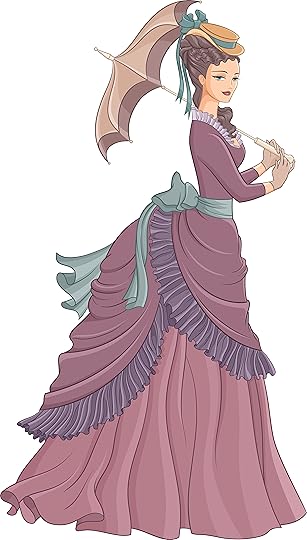 e risk for wealthy women, for it was described as a “heterogeneous society” where anyone who could afford the price of admission (and the clothing) would be admitted.
e risk for wealthy women, for it was described as a “heterogeneous society” where anyone who could afford the price of admission (and the clothing) would be admitted.
According to a sardonic book entitled Drinking the Waters, one NY newspaper columnist divided Sataroga Springs’ visitors into four distinct classes:
the real invalids, recognizable by their gloomy air and cadaverous cheeks;
the fashionables, those who go to Saratoga to kill time, and make a wake in the water’
the busters . . . keen blades from the cities, who come out here not merely to kill time, but themselves also
the politicians trolling for votes.1
Given this wide variety of social classes, a girl could not be too careful.
A woman with delicate manners might be surprised at dinner at some of Saratoga’s famous dining halls, continued the author:
Once the doors open, eager crowds rush in. Sometimes placecards are used, a process ‘which cannot be too much commended.’ Terribly crowded, people stuff sausages or whatever they can cram into their throats against time. People may eat in as few as eight minutes. There is a terrible din of crockery and crystal, and many voices demanding food. Waiters bump into each other and dishes rattle.2
The evening offered pastimes that could be so rewarding as to make up for a less-than-edifying dining experience. The public parlors served as gathering places that offered excellent opportunities to admire the opposite sex and, if one could procure a proper introduction, mingle. In these parlors gentlemen (or those pretending to be) lounged on balconies while smoking cigars, while ladies did fancy sewing. Guests might read aloud or play the piano.
As twilight approached, people prepared for the high point of Saratoga—dancing. Guests proceeded into the ballrooms through archways festooned with greenery and flowers. The fashion display also reached a high pitch, as ladies (some of whom packed more than a dozen trunks to accommodate their bustles, ruffles, hats, gloves, and silk stockings) brought out their finest. It was a dressmaker’s dream.
Chambers, Thomas A., Drinking the Waters: Creating An American Leisure Class at Nineteenth-Century Mineral Springs, Washington, Smithsonian Institution Press, 2002, p. 81.
Chambers, p. 92-3.
April 21, 2017
Author Talk on Susan B. Anthony’s Kin
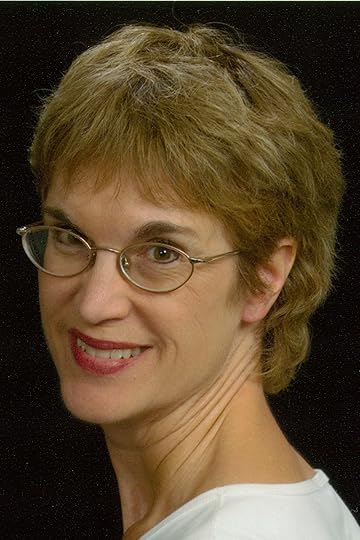 “All For Suffrage: Susan B. Anthony’s Kin” will be Jeanne Gehret’s topic in an evening presentation at the Penfield (N.Y.) Public Library this coming Thursday, April 27, from 7-8:30. Admission is free.
“All For Suffrage: Susan B. Anthony’s Kin” will be Jeanne Gehret’s topic in an evening presentation at the Penfield (N.Y.) Public Library this coming Thursday, April 27, from 7-8:30. Admission is free.
Miss Anthony’s devotion to woman suffrage is well-known. Lesser-known is how she also campaigned for black suffrage–and how her entire family supported her in both efforts.
Come discover how the members of Susan’s family thought for themselves and stood up for their beliefs–even when they risked public disapproval, arrest, the ruin of career, or death.
Copies of The Truth About Daniel, the first in the Dauntless Series about this amazing family, will be available for sale and author signing. This talk commemorates the 100th anniversary of woman suffrage in New York State.
April 17, 2017
The Anthonys on President Lincoln
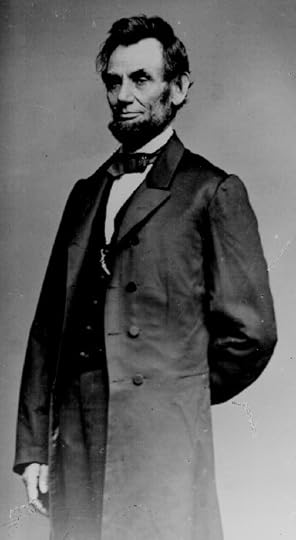 On April 14, 1865 President Lincoln suffered a fatal gunshot wound from John Wilkes Booth. The news of his death reached D.R. Anthony, his wife Annie, and his sister Susan where she was visiting them in Leavenworth.
On April 14, 1865 President Lincoln suffered a fatal gunshot wound from John Wilkes Booth. The news of his death reached D.R. Anthony, his wife Annie, and his sister Susan where she was visiting them in Leavenworth.
In her diary, Susan recorded that they attended different churches to hear the ministers’ pulpit commentary on the assassination. It’s likely that they felt the same kind of shock and dismay that mark our era’s reception of the news about President Kennedy’s assassination or the fall of the Twin Towers.
D.R. must have felt a special regret because he had known Lincoln personally and later taken a special interest in his safety. Lincoln spoke in Leavenworth during his presidential campaign trail in December 1859, and that night traded stories with Anthony and other friends, propping their feet up and feeding the fire as they swapped stories.
Two years later, after Anthony had fiercely defended Kansas against proslavery forces, he was invited to guard President Lincoln in the White House at the start of the Civil War. The city of Washington was isolated, surrounded by Confederate troops, and rumors spread that Lincoln would be abducted. Thanks for a shrewd intimidation campaign by Lincoln’s guards, rebel troops thought there were far more of “those damned Kansans,” many of whom had shocked the nation by fighting alongside the notorious John Brown. You can read more about this threat to Lincoln on my 3/16/16 post, “Saving Lincoln from Abduction.”
Ironically, Booth had performed in Leavenworth on the same stage where Lincoln had admonished Kansans not to resort to violence but to solve matters by voting.
April 7, 2017
Opera and Ventriloquists
New York City residents wanting to escape the heat in the 19th century flocked to the attractions of Saratoga Springs, NY. Both D. R. Anthony and his sister Susan gave public lectures there1. Why was the resort such a famous destination?
Tucked into a forested eastern edge of New York State and known for its mineral waters bubbling up from the ground, Saratoga provided opera (pictured above), medieval tournaments, billiards, excursions, ventriloquists, acrobats, and more. It was the perfect place to socialize, flaunt one’s finest clothing, and flirt with the opposite sex. For this reason, I selected Saratoga as the fictional meeting place of D.R. and his bride Annie in The Truth About Daniel. They approached the “meet market” with the same mixture of desperation and hope felt by today’s visitors to online matchmaking sites.
This post and the next will give competing perspectives on how America’s mid-Victorians enjoyed their resort vacation.
An article from the June 1864 New York Times2 extols the virtues of Saratoga with unbridled enthusiasm, describing renovations to various hotels whose luxuries and activities almost made one forget that the nation was still embroiled in the Civil War.
Saratoga’s Union Hotel greatly impressed my fictional Annie with its eighty-foot rotunda and four acres of gardens. The dining hall could seat 450 people, and the rooms featured hand-made furnishings. So elegant was the hotel that an 1860 scrapbooker wrote “It is like attending a dinner party every day, and a full-dress party every night.”3 According to The Times, the Union’s wine vaults extended under the entire frontage of the main building, 100 feet long by 60 feet wide.
Even in that carefully-manicured fantasy land, the war sometimes intruded. Southern visitors who had flocked there before the conflict stayed away during the battle years, causing speculation about whether the resort could remain solvent without Confederate patrons. Among the celebrities expected for the 1864 summer season was Dr. Frank Palmer who had grown rich on his invention of an artificial leg to rehabilitate soldiers injured in the war.
Drop back next time for some amusing discrepancies between the resort’s public and private persona.
Ida Husted Harper, Life and Work of Susan B. Anthony, p. 121. For the less fashion-minded, Saratoga offered a forum for public speakers that hosted both Susan and her brother in their campaigns for equal rights.
“The Watering Places,” New York Times, June 19, 1864
M.J. Holmes. From a clipping in a scrapbook, dated August 15, 1860.
Image of Saratoga Opera House.
April 4, 2017
Will YOU be the lucky winner?
Time is running out to enter your name for a chance to win a free copy of The Truth About Daniel. Goodreads is offering two free copies until this Thursday, April 6. (Click here to see my previous post explaining how Goodreads works.) On my own Goodreads site I have rated more than two hundred books that I’ve read, including many in the historical fiction genre. If you’ve read some of them too, share your comments with me there!
Don’t want to take your chances at winning a copy of my book? You can order it now directly from Amazon by clicking here.
Here’s a recent review from a staff member at the Leavenworth (KS) Public Library:
As far as the historical parts of the novel are concerned, they are well researched and its depiction of Civil War era Leavenworth is spot on.
The story is split between two viewpoint characters, D.R. Anthony and his wife Annie. There does not seem to be an existing novel written about Mr. Anthony, and the fact that this one also shows events from Annie’s perspective is quite interesting, especially considering that she is often pushed into her husband’s shadow. Seeing Annie fleshed out as a real human being with thoughts and emotions of her own was quite refreshing.
http://SusanBAnthonyFamily.com/
or her brother Daniel Read (D.R.) Anthony. I share all of these on my blog. You can also get special insights into my new b Whenever I travel, I stop in to visit a site connected with Susan B. Anthony
or her brother Daniel Read (D.R.) Anthony. I share all of these on my blog. You can also get special insights into my new book The Truth About Daniel, based on D.R.'s romance and his rambunctious days as an original Kansas Jayhawker ...more
- Jeanne Gehret's profile
- 15 followers


